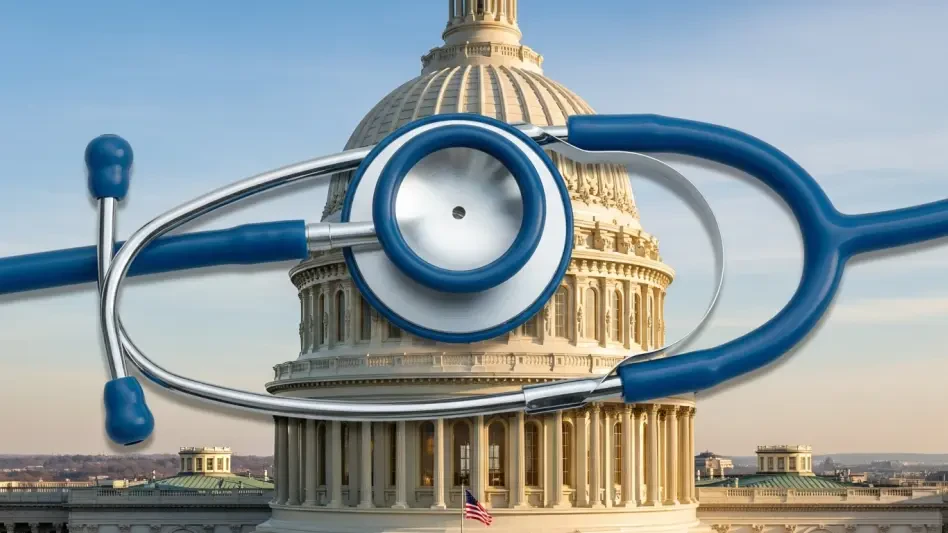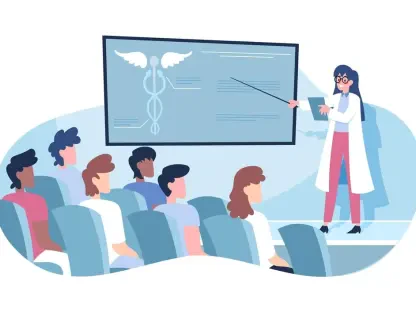Imagine a nation on edge, with government operations halted and millions of Americans bracing for a potential doubling of their health insurance premiums right as open enrollment begins. This is the stark reality unfolding as a federal shutdown collides with the looming expiration of enhanced Affordable Care Act (ACA) premium tax credits. The political stakes couldn’t be higher, with health care affordability emerging as a flashpoint in partisan battles. This roundup dives into diverse opinions and insights from policy analysts, political strategists, and affected citizens to unpack why Democrats are framing this shutdown as a health care crisis, how Republicans are responding, and what it means for everyday people caught in the crossfire. The purpose is to provide a comprehensive view of this contentious issue, comparing differing takes and shedding light on the broader implications.
Unpacking Diverse Views on the Shutdown-Health Care Nexus
Policy Analysts Weigh In on ACA Tax Credits’ Role
A significant portion of the discourse centers on the critical importance of ACA premium tax credits, which have slashed insurance costs for millions. Analysts from various think tanks emphasize that these credits, expanded during recent economic relief efforts, have driven uninsured rates to historic lows. However, with their expiration looming at year-end, projections suggest premiums could double for nearly 24 million marketplace enrollees, creating a dire affordability crisis. This data-driven perspective highlights the urgency of extending the credits to prevent a massive setback in health care access.
Another angle from policy experts focuses on the timing of this expiration, coinciding with open enrollment. Many argue that this overlap amplifies the public’s awareness of potential cost spikes, making it a ripe moment for political messaging. Some analysts caution, though, that the broader impacts of a government shutdown—such as halted public services—might dilute the focus on health care, potentially undermining efforts to prioritize this issue in legislative negotiations.
A third viewpoint from this group stresses the long-term ramifications. Experts note that failing to extend these credits could unravel years of progress in reducing uninsured numbers, particularly among low- and middle-income households. This perspective urges lawmakers to look beyond immediate political wins and consider the systemic consequences of inaction, framing the debate as a pivotal moment for health policy.
Political Strategists Analyze Democrats’ Framing
Turning to political strategists, there’s a consensus that Democrats are leveraging health care affordability to regain trust among working-class voters. Many strategists point out that the party is strategically timing their push during open enrollment to maximize visibility and public pressure. Data showing that 80% of credit beneficiaries live in Republican-leaning states is often cited as a key motivator for Democrats to pin blame on GOP inaction, turning a policy issue into a regional electoral weapon.
On the flip side, some strategists express skepticism about this approach’s effectiveness. They argue that while health care resonates deeply with voters, the broader fallout from a shutdown—think unpaid federal workers and disrupted programs—could fragment public attention. This view suggests that Democrats risk overplaying their hand by narrowing the narrative to one issue when multiple crises are at play, potentially alienating constituents with other pressing concerns.
A contrasting take among strategists highlights the emotional resonance of health care as a unifying theme. They believe that by focusing on tangible impacts, like premium hikes, Democrats can cut through the noise of shutdown grievances. This perspective sees the strategy as a calculated move to rebuild voter coalitions, especially in battleground areas where affordability remains a top concern, even if it doesn’t fully dominate the shutdown discourse.
Republican Counterarguments and Tactical Insights
Republican-leaning commentators and strategists offer a sharp rebuttal to the Democratic narrative. Many assert that the shutdown itself stems from Democratic maneuvers, and thus, the blame for any fallout, including on health care, should not fall on their party. They often frame the tax credit expiration as a separate issue, one that can be addressed after government operations resume, rather than a crisis necessitating immediate action under duress.
A different angle from this camp focuses on voter perception. Some GOP analysts warn that failing to act on the credits could invite electoral blowback, especially in states where beneficiaries form a significant voting bloc. This internal debate reveals a tension between ideological resistance to expanding ACA benefits and pragmatic concerns about midterm outcomes, with some pushing for a compromise to neutralize the issue.
Yet another viewpoint emphasizes rhetorical tactics. Commentators note that Republican messaging often diverts attention from affordability by raising unrelated concerns, such as unfounded claims about expanding coverage to non-citizens. This strategy aims to shift the conversation away from the core issue of premium costs, though critics argue it risks alienating voters who prioritize straightforward solutions over partisan distractions.
Voices from the Ground: Personal Impacts and Public Sentiment
Everyday Americans Share Their Stakes
Beyond policy and politics, the human toll of this standoff is a recurring theme in public commentary. Stories from individuals facing coverage uncertainty paint a vivid picture of anxiety. For instance, a part-time worker from Virginia, reliant on marketplace plans, expressed dread over potential premium increases that could force a choice between coverage and basic needs. Such accounts ground the abstract debate in real-world struggles, amplifying calls for urgent action.
Public forums and social media also reflect a swell of concern among marketplace enrollees. Many voice frustration over the partisan gridlock, emphasizing that their ability to afford health care shouldn’t hinge on political gamesmanship. This grassroots perspective often cuts across party lines, with individuals in both Democratic and Republican-leaning areas echoing a shared demand for stability in insurance costs during turbulent times.
A less discussed but poignant angle comes from rural communities, where access to affordable plans is already limited. Residents in these areas, often in GOP-leaning states, highlight how the loss of tax credits could exacerbate existing disparities, leaving them with few viable options. This regional lens adds depth to the narrative, underscoring that the impact of this crisis isn’t uniform across the nation.
Polling Data Reveals a Divided Public
Public opinion, as captured by recent surveys, offers a nuanced snapshot of sentiment. Polls indicate that over 75% of Americans support extending the ACA tax credits, signaling broad backing for maintaining affordability. However, separate data suggests skepticism about using a government shutdown as leverage, with only a minority believing this tactic justifies the broader disruptions caused by a closure.
Regional breakdowns of these polls add another layer of insight. In states with high concentrations of credit beneficiaries, support for extension often spikes, even among traditionally conservative voters. Analysts interpret this as a warning sign for Republican lawmakers, suggesting that inaction could translate into electoral consequences if constituents feel directly harmed by rising costs.
A final polling perspective focuses on competing priorities. While health care affordability ranks high, many respondents also cite concerns like unpaid federal workers and interrupted services as equally pressing. This split in public focus challenges the notion that health care alone can dominate the shutdown narrative, revealing a complex landscape where multiple grievances vie for attention.
Key Takeaways from the Health Care-Shutdown Clash
Reflecting on this roundup, several critical insights emerge from the diverse perspectives explored. Policy analysts underscored the indispensable role of ACA tax credits in sustaining record-low uninsured rates, warning of catastrophic premium spikes if they lapse. Political strategists on both sides revealed calculated maneuvers—Democrats aiming to reclaim voter trust through a health care focus, and Republicans pushing back by decoupling the issue from the shutdown’s immediate chaos. Meanwhile, personal stories and public sentiment highlighted the tangible human cost and widespread support for solutions, tempered by frustration over partisan tactics.
Looking back, the debate showcased health care’s enduring power as a political lightning rod, capable of both uniting and dividing public opinion. The collision of a government shutdown with policy deadlines amplified the stakes, forcing a reckoning over affordability that transcended mere rhetoric. As actionable next steps, advocacy for credit extensions through public campaigns or pressure on lawmakers stands out as a practical move. Additionally, exploring bipartisan stopgap measures to avert premium hikes could bridge divides. For individuals navigating open enrollment amidst this uncertainty, seeking local resources or community support offers a lifeline, ensuring that personal health care decisions aren’t left entirely to political whims.









